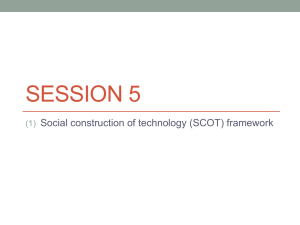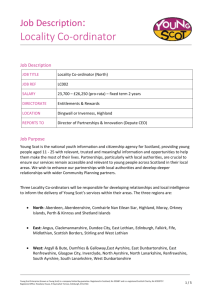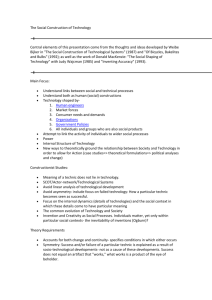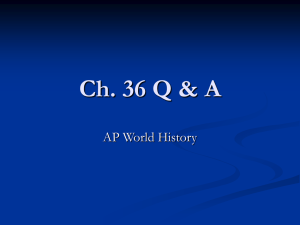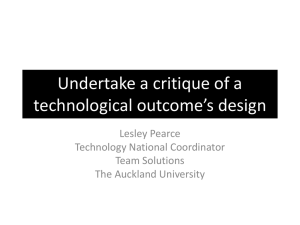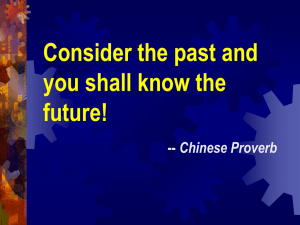The Social Nature of Technology
advertisement
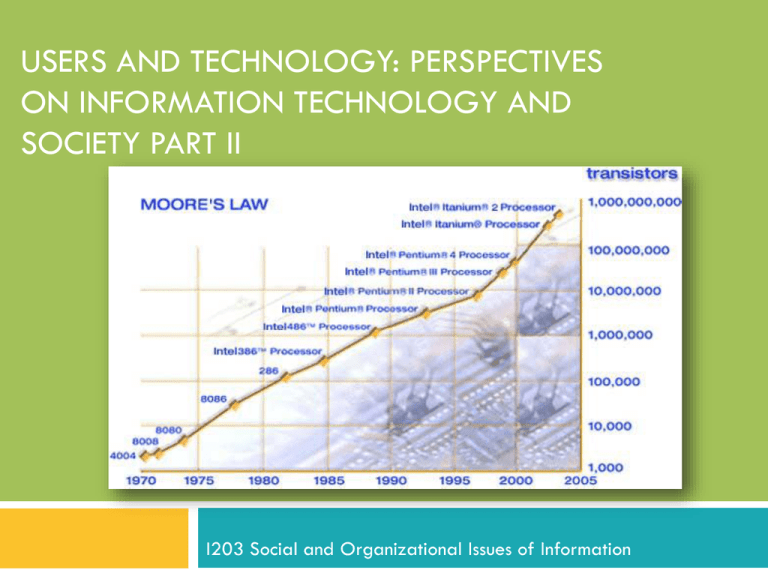
USERS AND TECHNOLOGY: PERSPECTIVES ON INFORMATION TECHNOLOGY AND SOCIETY PART II I203 Social and Organizational Issues of Information Agenda Social Construction of Technology Actor-Network Theory Other Explanations for Technological Change 2 Next Week: Tuesday, in-class discussion lead by Ashwin and Devin Implications of the Internet Small group discussion of paper topics, brainstorming Thursday: No class, catch up on any readings and/or work on Assn1. 3 Main arguments of SCOT (review) Interpretive flexibility Different interpretations of same artifact by different social groups Stabilization Over time, negotiations lead to convergence. Closure Closure is a social process in which the technological artifact reaches a final, consensual form. 4 Relevant ‘Social Groups’ in SCOT What is a ‘relevant social group’? “all members of a social group share the same set of meanings, attached to a specific artifact” (Pinch and Bijker 1987) Different groups may lead to different interpretations. Resulting “technology” is a negotiation between these groups. 5 Technological “frames” Technological frame: A shared cognitive view that defines a relevant social group; members with a shared technological frame have a common interpretation of an artifact. Goals Tacit knowledge Current/available theories Design methods (among other factors) Technological frame is similar to concept of the “paradigm” though not quite as broad. 6 Critiques of SCOT (selected) SCOT assumes equality of groups. “Politically Insipid” Fails to recognize power dynamics between social actors, groups. SCOT tends to avoid making, “over-arching pronouncements for or against the particular technological developments…because [the researchers] know enough to realize the complexities they are examining that the futility of trying to change the world by pronouncements.” SCOT is a historical method, but history is tricky! The details of a technology’s historical development heavily influence a SCOT analysis. Historical details are often contested. See: Clayton, Nick. 2002. “SCOT: Does it Answer?” Technology and Culture 43:351-360. 7 Critiques of SCOT (selected) Over-emphasizes agency, under-emphasizes structure. Agency: Ability to be in action or to exert power Structure: Arrangement of parts that together form a whole; The composition of a social group and the way it is organized. Fails to recognize the powerful influences of institutions and forces that are difficult to change, construct (e.g. political economy, social classes, geography, sociodemographic factors) “We make our own world, but not exactly as we please.” – Jean Lave 8 Rosen’s Critique of SCOT: The Social Construction of the Mountain Bike 9 Determinism & SCOT in Practice Both perspectives are extremes, hard to justify on their own. A moderate approach is reasonable, but arguably less exciting and certainly not any better at prediction. Where do we place the emphasis: on the technology, or on the people? The POV you choose helps determine: The problems you choose to research The methods you use Your analysis and interpretation of data (i.e. Agency) 10 Actor-Network Theory (ANT) Builds on ideas from SCOT; acknowledges non-human elements in technological development. Originally credited to Michel Callon, Bruno Latour and John Law. Deals with processes by which scientific disputes become ‘closed’, ideas accepted, methods adopted. Mostly a qualitative approach: following the actor, or following inscriptions (texts, images, databases, etc) 11 Vs. 12 Actor-Network Theory Human and Non-human elements are connected in a network that can be used to understand the competing influences on some outcome. Actor can be human or non-human. Humans Texts Technologies themselves 13 ANT applied to web services 15 Critiques of ANT How can inanimate objects have agency? Proponents say that they know that objects do not have intentional action Critics say that if you treat humans and objects exactly the same way, it leads to preposterous claims about the effect of technology What does it mean that an actor is simultaneously an “actor and a network”? How do you test and measure that? If every actor can be a network, how far does this logic go before we have a network that is too complex to even comprehend? 16 Other Economic and Sociological Explanations for Technological Change Problems with neoclassical economic solutions to tech change and radical innovation ‘Natural’ Trajectories and Self-fulfilling prophecies 17 Moore’s Law Example “Since Intel was founded in 1969 by Robert Noyce and Gordon Moore, Moore's Law became a target that drove product development within the company. In fact, the entire semiconductor industry is striving to track Moore's curve: the Semiconductor Industry Association puts together periodic "Technology Roadmaps" that were closely followed by the chip industry. These roadmaps, designed by technology working groups made up of leading industry experts, define in detail the course for future developments over a 15-year period, driven by the desire to continue the past trends of Moore's Law. In this way, Moore's Law has become a selffulfilling prophecy.” -Mendelson, 1979 18 Other Economic and Sociological Explanations for Technological Change “Ethnoaccountancy” Do accounting practices help guide innovation? 19 Assignment #1 Available on Course Website: 20
